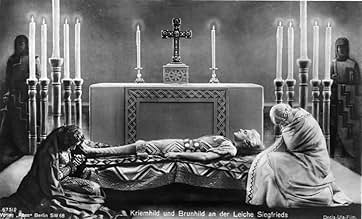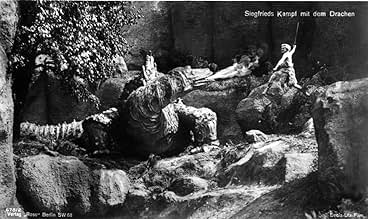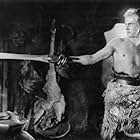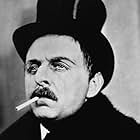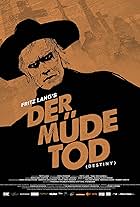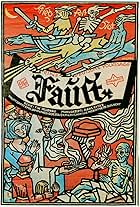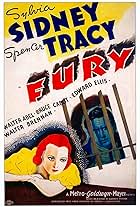VALUTAZIONE IMDb
8,1/10
6737
LA TUA VALUTAZIONE
Aggiungi una trama nella tua linguaSiegfried, son of King Siegmund of Xanten, sets off on a treacherous journey to the Kingdom of Burgundy to ask King Gunther for the hand of his sister, the beautiful Princess Kriemhild.Siegfried, son of King Siegmund of Xanten, sets off on a treacherous journey to the Kingdom of Burgundy to ask King Gunther for the hand of his sister, the beautiful Princess Kriemhild.Siegfried, son of King Siegmund of Xanten, sets off on a treacherous journey to the Kingdom of Burgundy to ask King Gunther for the hand of his sister, the beautiful Princess Kriemhild.
- Premi
- 1 vittoria e 2 candidature
Yuri Yurovsky
- The Priest
- (as Georg Jurowski)
Trama
Lo sapevi?
- QuizThe dragon in the film is not a miniature. It is a full-scale puppet 60 feet long.
- BlooperThe tip of the spear Siegfied is killed with exits through the chest. Since Siegfried is invulnerable except at the entry point this should not be possible. The same impossible chest wound is shown later to be the one bleeding when the murderer enters the room.
- Curiosità sui creditiKarl Vollbrecht receives a credit as "Erbauer des Drachens" -- 'dragon builder'.
- Versioni alternativeA 2012 restoration project completed by the Friedrich-Wilhelm-Murnau-Stiftung has been released by Kino Lorber on both DVD and Blu-ray formats. Both "Die Nibelungen: Siegfried" (1924) and "Die Nibelungen: Kriemhild's Revenge" (1925) are included. The film's running times differ from other versions at 149 minutes and 131 minutes, respectively. This can be attributed to the fact that the restoration utilized some footage from different takes of scenes and slight adjustments were made to the 'frames-per-second' rate perhaps to present a more realistic flow of the action.
- ConnessioniEdited into Fritz Lang, le cercle du destin - Les films allemands (2004)
Recensione in evidenza
I think this is an important film to see even for historical reasons, since after "Die Nibelungen" (1924) Lang would make "Metropolis" (1927), something for which he is best remembered. But more importantly, this is in my mind astonishingly gripping and the far more satisfying film (or two).
It's fascinating how different the two parts are. As they are, their respective brilliance shines brightly, individually, and in itself the film as one grand epic reinvents itself come the revenge story of the latter half. The first film is the fantastical one, precursor to what we have now as high fantasy adaptations, mainly "The Lord of the Rings". In this sense "Siegfried" is shockingly modern, and here Lang succeeds far better than in "Metropolis", where he didn't have a national epic upon which to project the visual aesthetics, instead his own sense of national identity projected into a perceived future or alternate present. This is surprisingly lucid, which itself is a testimony of its filmic brilliance.
The court at Worms is as rigidly symmetrical and foreboding as one can be, and the film is full of such visual information, rigid symmetry that I bet greatly inspired Eisentein's "Ivan Groznyi" films (1944, 1958). In fact, I would love to see these masterworks by the two directors together someday, since their similarities go beyond style and visual language, also converging in their handling of national folklore in highly theatrical terms.
The new restoration of the project, made by the Friedrich-Wilhelm-Murnau-Stiftung, is available on Blu-ray in both Region A and B, courtesy of Kino and Masters of Cinema respectively. What a treasure! In fact, the more I think of it, I can't wait to revisit it again.
It's fascinating how different the two parts are. As they are, their respective brilliance shines brightly, individually, and in itself the film as one grand epic reinvents itself come the revenge story of the latter half. The first film is the fantastical one, precursor to what we have now as high fantasy adaptations, mainly "The Lord of the Rings". In this sense "Siegfried" is shockingly modern, and here Lang succeeds far better than in "Metropolis", where he didn't have a national epic upon which to project the visual aesthetics, instead his own sense of national identity projected into a perceived future or alternate present. This is surprisingly lucid, which itself is a testimony of its filmic brilliance.
The court at Worms is as rigidly symmetrical and foreboding as one can be, and the film is full of such visual information, rigid symmetry that I bet greatly inspired Eisentein's "Ivan Groznyi" films (1944, 1958). In fact, I would love to see these masterworks by the two directors together someday, since their similarities go beyond style and visual language, also converging in their handling of national folklore in highly theatrical terms.
The new restoration of the project, made by the Friedrich-Wilhelm-Murnau-Stiftung, is available on Blu-ray in both Region A and B, courtesy of Kino and Masters of Cinema respectively. What a treasure! In fact, the more I think of it, I can't wait to revisit it again.
- kurosawakira
- 8 mar 2013
- Permalink
I più visti
Accedi per valutare e creare un elenco di titoli salvati per ottenere consigli personalizzati
- How long is Die Nibelungen: Siegfried?Powered by Alexa
Dettagli
- Tempo di esecuzione2 ore 23 minuti
- Mix di suoni
- Proporzioni
- 1.33 : 1
Contribuisci a questa pagina
Suggerisci una modifica o aggiungi i contenuti mancanti

Divario superiore
By what name was I Nibelunghi: Sigfrido (1924) officially released in India in English?
Rispondi



